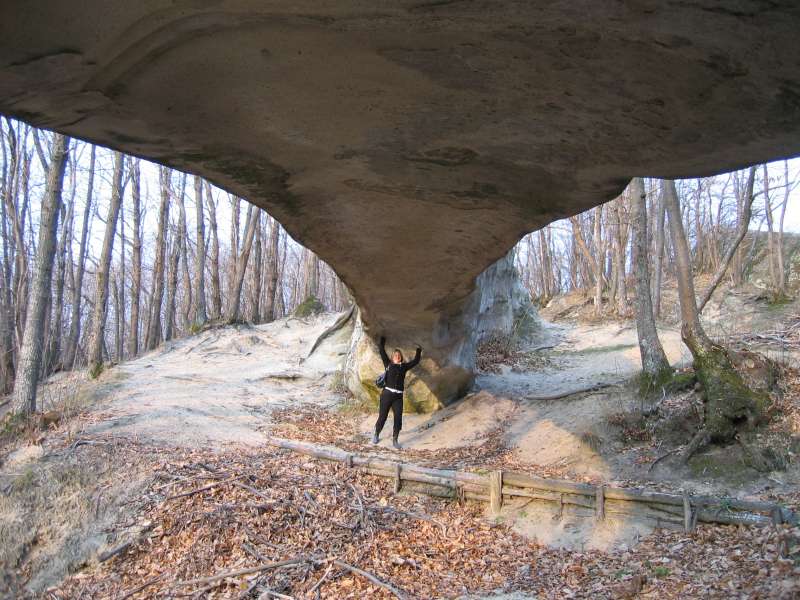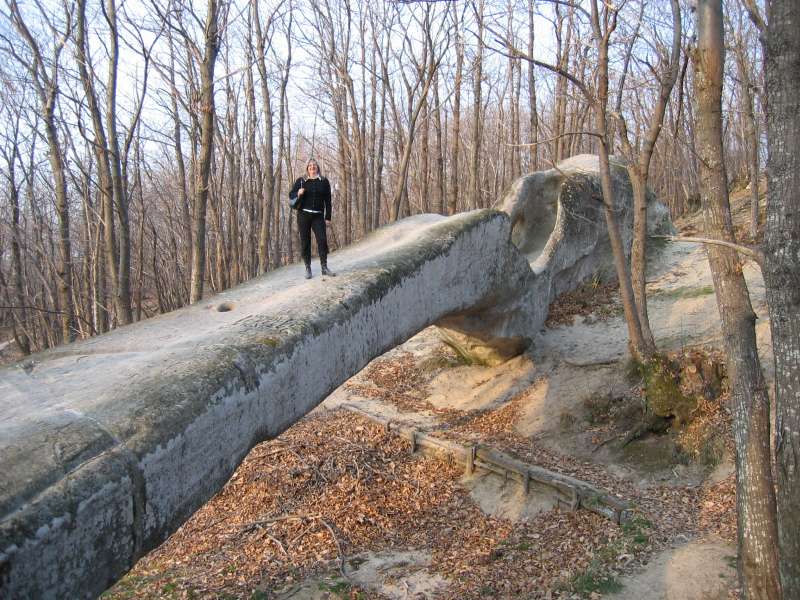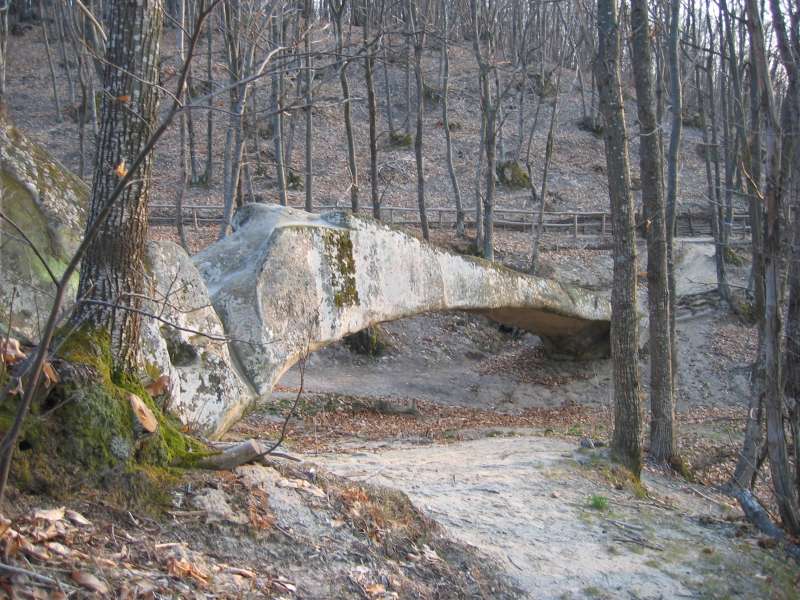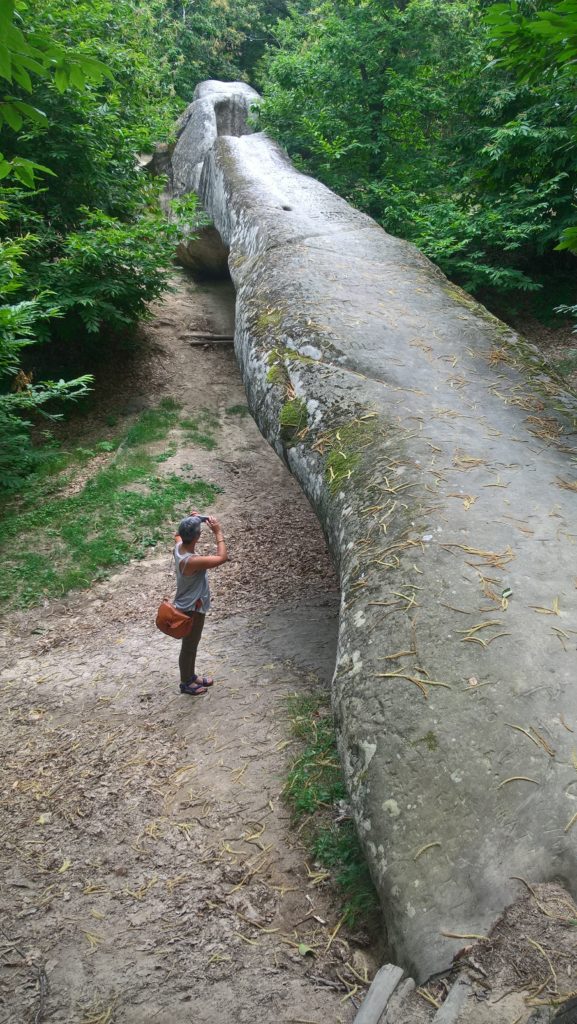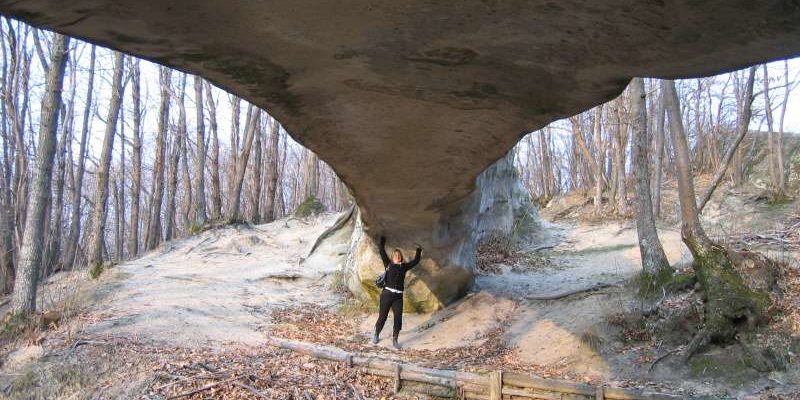As we have said in a previous article, the natural arch of Mount Forato, exposed to sunlight all day long and visible from tens of kilometres distance away, seems to want to show off its impressive beauty. This time instead we will talk about another natural arch, the Ercole Bridge, also called the Devil’s Bridge, mysterious and haunting in shape, hidden inside by a lush forest of chestnut trees which jealously protects its secrets. Whereas the morphological and genetic interpretation of Mount Forato is evident, the Ercole Bridge appears more difficult to interpret both for the type of rock (sandstone boulder), without kartisfication, and for its position: the bridge crosses a little valley ridge, without any water circulation, situated almost at the top of the plateau.
It is probably the remains of a sandstone bank where in remote times a little stream was flowing which, in correspondence to what is currently the west side of the bridge, precipitated down to the valley with a waterfall. Upstream of the waterfall a tight network of fissures would have favoured the absorption of the water underground, where directly under the sandstone layer, in contact with a less permeable level it would have generated, and progressively widened, an underground cavity parallel to the surface. Subsequently the fissured part of the sandstone bed disintegrated by the erosion, collapsed into the cavity below and isolated the bridge which today everyone can admire.
This very thin unique monument of nature, (the minimum thickness is less than a metre) although a lot shorter (about thirty metres), vaguely reminds one of the much more famous Landscape Arch (Utah), the longest natural bridge in the world (84 metres), also carved in sandstone.
The current appearance is due to erosive factors, still in action, tied to the alternation of freezing and defrosting, humidification and drying, which have mostly masked what remains of some work done by man which according to archaeologists would have been done on the northern extremity of the bridge, where in Roman Times, or maybe earlier, a bathtub was excavated to be used for therapeutic or purifying baths.
The awesomeness and sense of mystery which pervades this place could have played a definite role in making this site a place of worship, around it some Ligurian and Villanovian ceramic fragments have been found dating back between the VIII and III century BC., and thousands of Roman coins minted between the II century BC. and the V century AD.
To reach The Ercole Bridge it is best to reach Lama Mocogno (MO), take the state road n° 12 in the direction of Modena for a few hundred metres, until a junction, where a sign indicates a left turn to get to the gravelled square from which, parked the car, you proceed by foot for half an hour along a slightly uphill and downhill path.
An excellent starting point from Lama Mocogno is the B&B and wine bar Lama Café, where Giovanni is happy to supply useful information about the whole territory of the Frignano.
Lama Mocogno is about two hours driving distance from the Grotta del Vento.
